My first love was listening to stories, and my second love was writing. When I was three years old, I remember making marks on scraps of paper, calling them lists or notes or checks. I imitated the writing I saw. It was full of action. People wrote to get things done. And best of all, people wrote down what they saw in their imaginations. This story writing hooked me. I eventually changed those marks and squiggles into letters and words. It was quite a magical thing, which kept me writing. I loved creating characters and settings and problems I could solve. When I discovered poetry, I realized I could also write what my heart felt. I could find a way to understand myself in the real world. For me, writing is such an integral part of my identity. Writing has given me a way to explore and express the world as I see it.
As a teacher, I want my students to experience the joy of putting thoughts on paper, of reading words aloud and making them come to life. I’ve been teaching quite a long time, and I’ve met children who take up the pencil happily and write with confidence. They write about their experiences, and they write about fantastical worlds. Like me, these children are at home with a pencil in their hands. They have ideas and they write them down with ease. This strong connection grows and grows as they mature.
I’ve also met children who avoid writing, who feel like it’s the worst chore in the world and consider it akin to cleaning the toilet. When I’ve tried to coax these children to write and talk about imagination, they look at me stony-eyed. When I ask, “What do you see in your mind’s eye?” They look at me blankly and say, “Nothing.” Now, surely they must see something. They must dream and have wild ideas, but the connection between the head, heart, and hand has been broken somewhere along the line. These children have trouble expressing themselves. Maybe they judge themselves too harshly and feel their child-ideas are not worthy to put down on paper. And yes, the very act of writing may be difficult for some. That is why I’m glad for technology, keyboarding, voice to text, etc. These devices certainly help writers to produce.
This week, I began working with two fifth grade girls on writing. I created digital notebooks so they could more easily type their thoughts and ideas. I also wrote alongside them. We talked, we shared our writing, and we laughed. My intention was to build a small community of writers who practiced what they held in their heads and hearts, using their hands to express what they knew. I organized the first session into three parts: warm-up, poetry, and a short descriptive piece.
For the warm-up, I simply asked them to list ten things that were red. I slowed my pace to match theirs. I pondered red and did not use my first ten ideas. I made myself stretch like my students were stretching. I wanted to feel like they felt when they wrote. I paused, I looked out the window, I jotted down a word. Soon, we all had our lists of ten red things completed. We shared our ideas, and I told them my process for thinking about red things. I told them that I came up with categories first: birds, food, flowers, and gems. Then I thought about what red things belonged in each category: cardinal, strawberries, geranium, ruby, etc. I hoped that this strategy would help them when they continue to write lists like this.
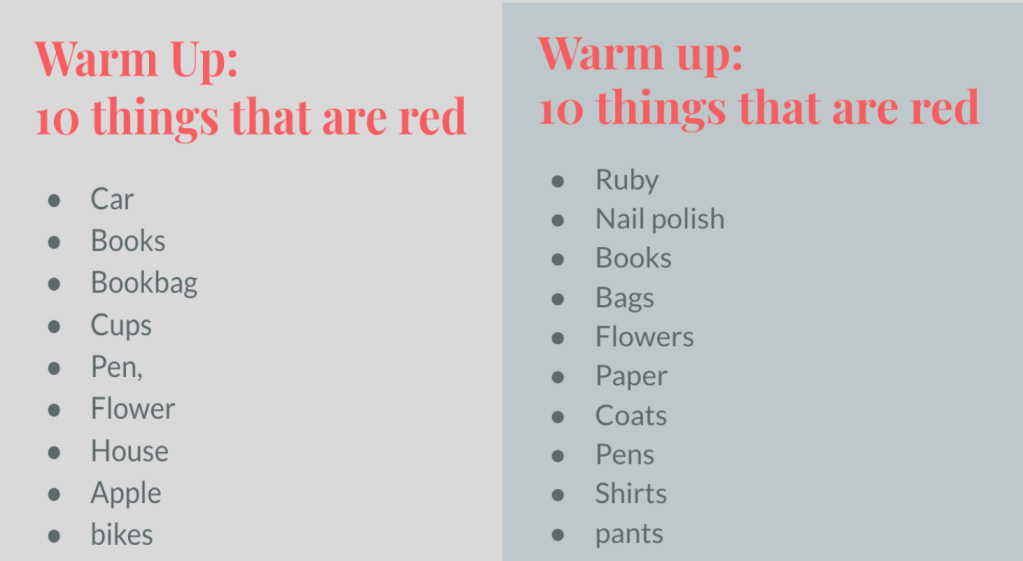
Now that the writers were sufficiently warmed up, I explained the next task: writing a poem, which starts, “I am born.” It was based on Jacqueline Woodson’s book, Brown Girl Dreaming. I read my poem and another student’s example. Then they got down to writing. They wrote quickly and there wasn’t a trace of hesitation. I hoped that poetry would be a low stakes type of writing for them and that it would help build their writing fluency. This is what Violet and Mia wrote:
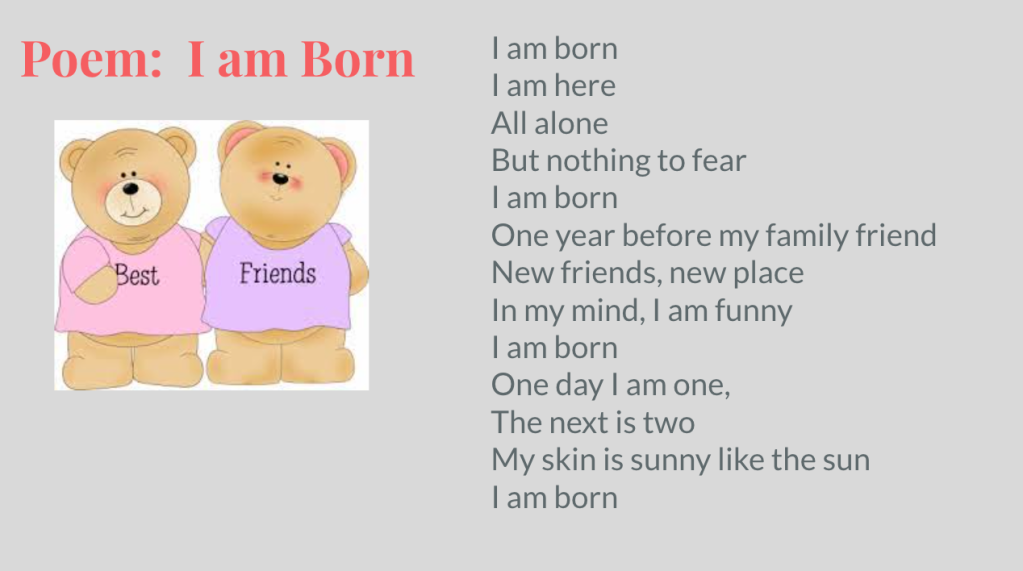
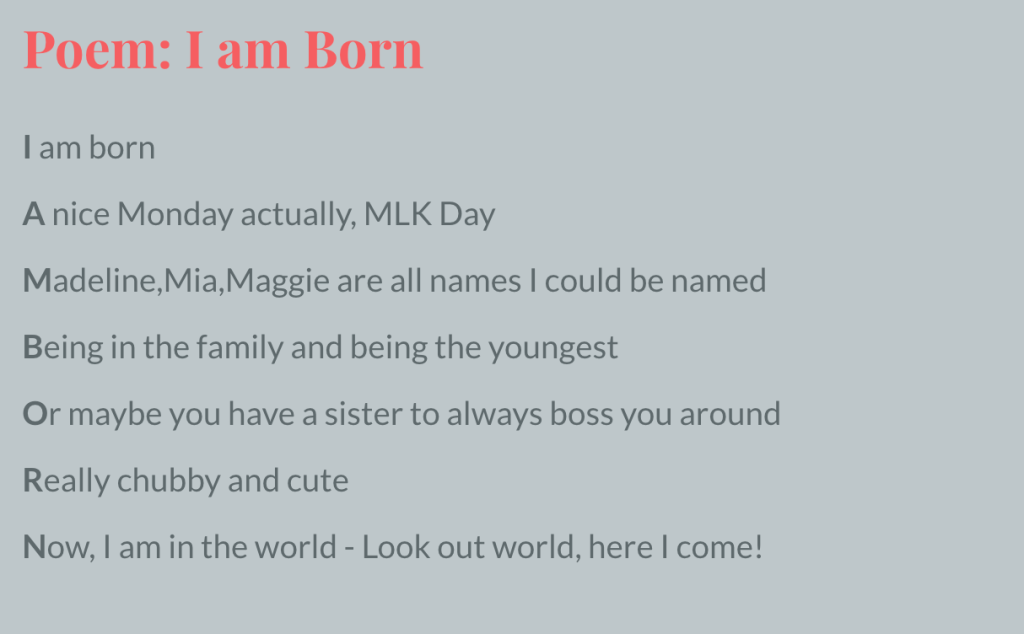
Then they were ready to write a longer piece. I showed them slide of winter scenes and asked them to choose a photo. They loved the photos of animals.Violet chose a dog scene, and Mia chose a photo of a cat stuck in the snow. Again, they quickly began to write. The photos supplied the visual information to help them describe the scene. They were proud of their writing and were eager to share.
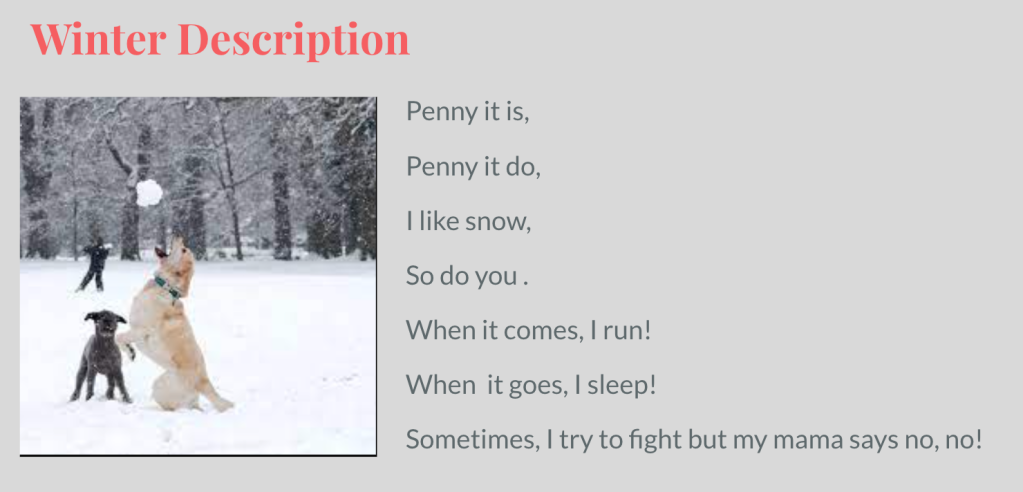
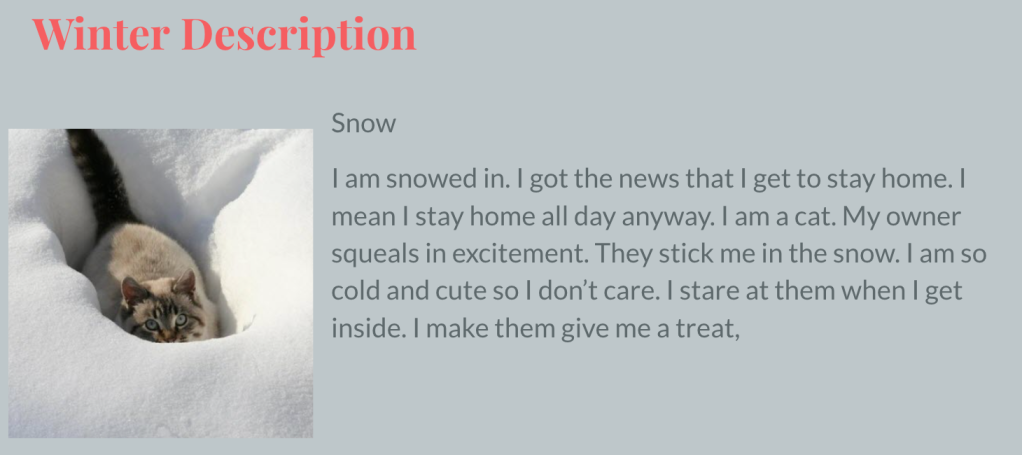
This hour long session went by quickly and the girls were not tired. They still had energy to write. I wanted to stop before they ran out of steam. I wanted them to feel successful as writers. After our session, I also was energized. I had almost forgotten what it was like to write alongside children. They helped me understand the reluctant writer more deeply, and in turn, I also felt successful. When I read their descriptive pieces, I realized what I needed to do to support them as writers. This information will help me plan the next session. I hope that this continued practice will help them become confident writers, that their hands will eagerly glide across their keyboards expressing what is inside their hearts and their heads.

What a comforting approach to a challenging task for a reluctant writer! I love how you gave them steps and set them up for success every step of the way, one leading into the next phase. Your passion for reading and writing – and teaching – is strongly evident here in your slice today.
LikeLiked by 1 person
I also structure my writing lessons like yours. I’ve always loved writing, but like you said there are some students who akin writing to cleaning the toilet. I always model writing and show them how it’s a process. During the SOL challenge I always write my Slice in front of them during the SSR time. I love showing them how sometimes I may spent a solid five minutes writing something only to delete it and start over again. One will always ask me why? I tell them that’s the beauty of the writing process.
LikeLiked by 1 person
Thats’ a great idea to write the SOL challenge in front of your students. It takes away the mystery!
LikeLiked by 1 person
Writing is such a hard thing to try to teach to 4th graders. I’ve learned that teaching the “voice” aspect of writing is much easier after they see me.
LikeLiked by 1 person
I would say you and your students were successful. You provided these girls with an opportunity to see themselves as writers. What a gift! I believe all children should have this opportunity.
LikeLiked by 1 person
What a fantastic lesson! Your pacing was impeccable! Bravo!
LikeLiked by 1 person
The low stakes of poetry works with my students, too. We always write together when it is notebooking time. They love the freedom. I wish all students could have this time for self-expression without all the constraints of curriculum. Thanks for sharing your process.
LikeLiked by 1 person
You have a very very cute blog!
LikeLike